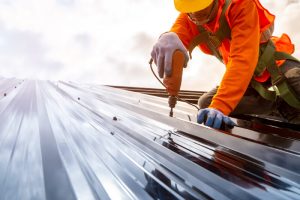
Where it comes to building or assembling, there is always a fastening system for it. Or rather, a very specific fastening system. Threaded inserts, bushes and captive screws play a crucial role in the quality, durability, strength and reliability of a product or construction.
Fasteners are often small but no less important: the use of inadequate systems, either in terms of technical characteristics or compatibility with the chosen materials, or an improper fixing with respect to the specifications can compromise the stability of the final structure. This can have serious consequences on safety, durability and brand perception.
For this reason, Specialinsert has always been committed to finding the best solution for its customers’ needs, and to informing them about the most common fixing mistakes.
1. Material incompatibility
One of the first aspects to consider when assembling a fastener is the nature of the receiving material. Plastic, wood, metal, composite or stone materials behave differently when subjected to mechanical processing such as the preparation of the receiving site, or when placed under mechanical tension or traction.
And there is more, some materials can give rise to adverse reactions: for example, aluminum and stainless steel can generate galvanic corrosion that affects the durability of the fixing system.
For this reason, you should consider first the materials that need fixing, and then look for the best compatible solution.
2. What if it’s not the correct choice?
Fixing solutions are very diversified, which means they are neither equivalent nor interchangeable.
Threaded inserts and press-in inserts behave differently, as do a blind rivet and a screw. It may seem obvious, but often the hurry, the lack of the right product, or even the lack of technical knowledge may lead to unsuitable choices. This can result in unstable, unsafe if not dangerous fastenings, with the risk of breaking or damaging materials.
This is why at Specialinsert we invest so much in pre/post sales technical assistance to advise our customers on the most reliable, durable and high-quality fixing solution for their needs.
3. Be careful in choosing the right tool
This is the most typical fixing mistake. Haste or carelessness can lead to applying the right fastener to the right material but using the wrong tool. A screwdriver and a drill only apparently do the same thing.
At Specialinsert we take care to inform customers on the correct installation procedures and the tools to be used. A measure that prevents damage to both the fastening systems and the tools involved.
4. Over-tightening the fasteners
Anyone wants a solid fastening, but that doesn’t mean over-tightening or forcing the system. Specialinsert solutions include not only precise dimensions for the holes, whether screws, threaded inserts, snap fasteners, rivets, nuts or self-locking fasteners, but also precise assembly instructions.
How to prevent fixing mistakes
To sum up, each fastener must be carefully selected and installed according to the specific application and the given instructions. In addition to data sheets, technical reports and video tutorials, Specialinsert provides a constant after-sales service to satisfy every customer need.
Any doubts? Visit the Techub section on our website or contact our sales assistance department.
